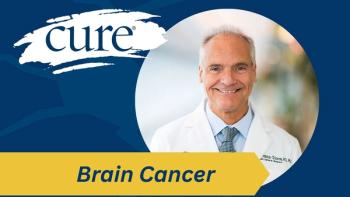
Trial tests new drugs, male breast cancer detailed
Every year, CURE invites one advocate who is attending the San Antonio Breast Cancer Symposium to serve as a guest blogger. This year readers will be hearing from Bev Parker, PhD, a 24-year breast cancer survivor who is attending the symposium for the seventh year.Breast cancer advocates at the San Antonio symposium have many opportunities to be involved and to learn. Two of my favorites today were the I-SPY 2 trial and posters on male breast cancer.Laura Esserman, MD, of the University of California at San Francisco, is the dedicated principal investigator of I-SPY 2, and Jane Perlmutter, PhD, is the tireless champion of advocate involvement (among many others spending countless hours on the trial). These two individuals hosted a breakfast today to educate interested advocates. I-SPY 2 features a random, adaptive, neoadjuvant design that involves testing investigational drugs in women whose locally advanced breast cancer is at high risk of recurrence. Prior to surgery, these women will undergo standard chemotherapy, and as many as 80 percent will also be given investigational drugs. Tissue from the surgery will rapidly identify the drugs that increase the chance that no cancer remains (referred to as "pathological complete response").Many drugs will be tried (among the first, a PARP inhibitor) and each will be tested on 20 to 120 patients, based on biomarker profiles. Patients will be followed for three to five years. This trial design allows for learning while doing, enables earlier drug approval, and drastically reduces costs.The trial will be conducted throughout the country with about 15 open sites by May 2010. The drugs that increase the chance that women will have a pathological complete response will go into phase 3 testing. One exciting part is that advocates have been involved at every step along the way.Male breast cancer comprises about 1 percent of breast cancer cases diagnosed each year in the U.S. Of the more than 1,000 posters presented this year at the symposium, five featured male breast cancer. One study was conducted in each of the following countries: Canada, Germany, Sweden, the U.K., and the U.S. Below are some of the study conclusions, alphabetical by country:
>Most men were prescribed adjuvant endocrine therapy, usually tamoxifen. Despite increased use of endocrine therapy, overall survival has not changed significantly over time. >Luminal A is the most common type of male breast cancer. It shows a significant improved outcome compared with basal-like tumors.
>No difference exists in the distribution of stage at diagnosis between male and female breast cancer.
>Subtle differences exist between male and female breast cancer regarding hormone receptor profiles.
>Men and women may share common risk factors for breast cancer. The biology of male breast cancer resembles the late onset and ER-positive type of female breast cancer. Mortality rates for breast cancer have improved over time, but progress for men lagged behind that for women.More tomorrow!To read more articles from CURE's coverage of SABCS 2009, visit




